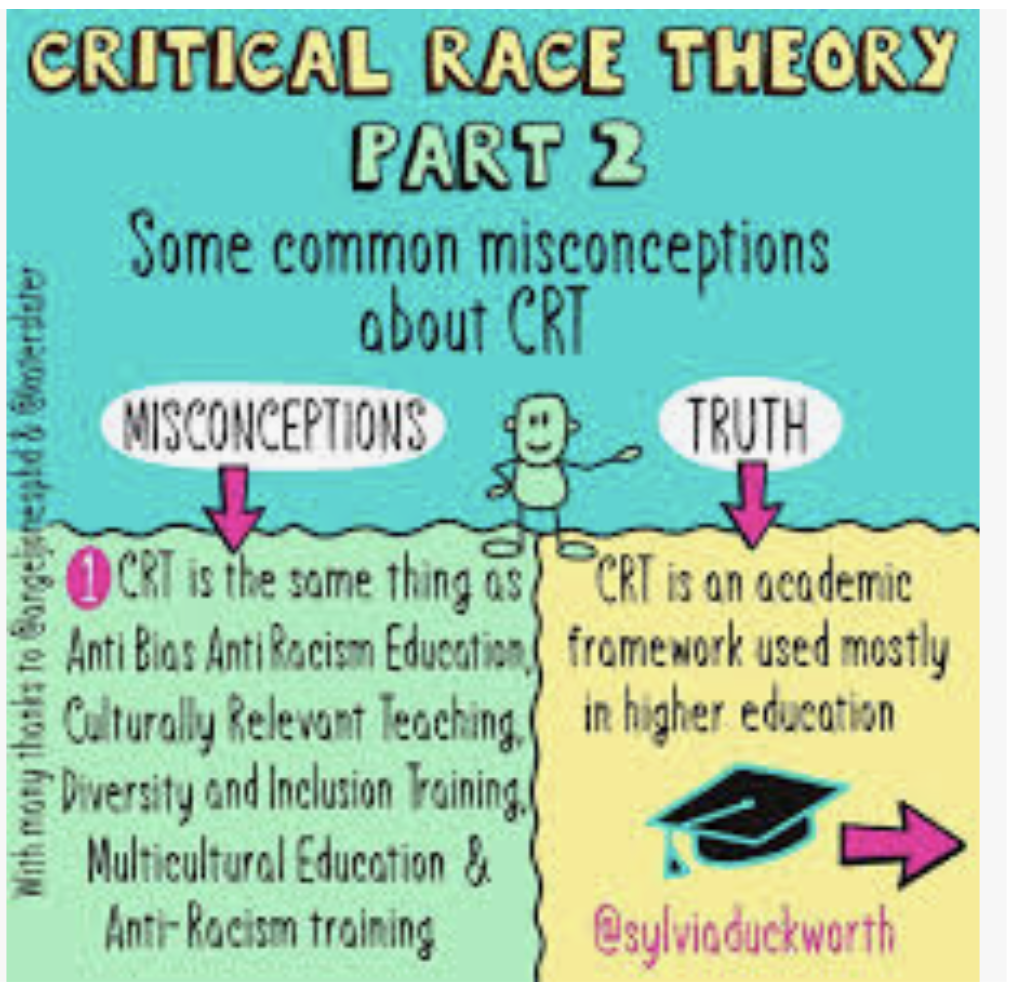How does Critical Race Theory get into classrooms? Through secret teacher training, of course
/uh huh. all us another. But first, explain the the illustrations below this excerpt of a Journal article published today
Randi Weingarten left no room for doubt. “Critical race theory is not taught in elementary schools or high schools,” the American Federation of Teachers president said in a speech last year. Even if that’s true, a Pennsylvania father’s battle with a school district demonstrates that public-school teachers are being trained in the deeply divisive racial ideology—and defensive administrators are playing semantic games to allay parental concerns.
In 2018 the Tredyffrin-Easttown School District near Philadelphia signed a contract with Pacific Educational Group, a California-based consulting firm. According to the school district’s website, the partnership’s purpose was “to enhance the policies and practices around racial equity.” The district assured parents in an online update last summer that no “course, curriculum or program” in the district “teaches Critical Race Theory.”
Benjamin Auslander didn’t buy it
[So he sued, and won access to the training materials]
Our examination of those materials indicates that Tredyffrin-Easttown staff are being trained in critical race theory.
Documents emailed from 2019 to 2021 by Pacific Educational Group to district administrators in advance of various training seminars cite critical race theory explicitly. A rubric dated Feb. 4, 2020, encourages participants to “Deconstruct the Presence and role of Whiteness” in their lives. A March 17, 2020, presentation lists “aspects and assumptions of white culture” in the U.S. Some are negative, such as “win at all costs,” “wealth = worth,” “don’t show emotion,” and in reference to food, “bland is best.” Others are seemingly universal principles such as “cause-and-effect relationships,” “objective, rational, linear thinking,” and “plan for future.”
That presentation also spells out the “5 tenets of critical race theory” to “better understand the critical intersection of race and schooling.” One tenet is the “permanence of racism,” or the idea that “racism is endemic to all our institutions, systems and structures” in the U.S. Another is “whiteness as property.” The “critique of liberalism” tenet argues that “colorblindness,” “neutrality of the law” and the “myth of meritocracy” must be “deconstructed.”
These tenets aren’t presented as abstract notions for faculty to consider, but ideas they’re meant to apply. School staff’s ability to use “critical race theory . . . to inform racial equity leadership and analysis of school policies, practices and procedures” is considered a sign of the successful “internalization and application” of Pacific Educational Group’s framework. And a chart includes “Critical Race Theory” as a step toward “Equity/Anti-Racism School Transformation Action Planning.” A Feb. 3, 2021, seminar is even titled “Using Critical Race Theory to Transform Leadership and District.”
But wait, there’s more!


